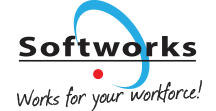We’re very interested to see that Sanna Marin, Finland’s new Prime Minister has called for the introduction of a flexible working schedule in the country based on a 4-day-week and 6-hour working day saying “I believe people deserve to spend more time with their families, loved ones, hobbies and other aspects of life, such as culture. This could be the next step for us in working life,” said Marin.
Finland has already adopted the Working Hours Pact in 1996, which gives most employees the right to adjust their typical working hours by starting or finishing up to three hours earlier or later. In neighbouring Sweden, where the 6-hour-day has already been applied since 2015, results showed that employees were happier, wealthier and more productive, as they were still fully paid and customers were more satisfied.
While your company may not be ready to reduce the number of days or even the number of hours employees work there are lots of other ways to introduce flexibility that still offer huge benefits for both employer and employees.
Softworks has worked with hundreds of companies to help them implement and manage Flexible working policies. Could 2020 be the year you implement flexible working for your employees? If so what do you need to consider and how can you go about it?
Here is a short rundown of 5 things to consider when introducing flexible working.
1. Why should we introduce Flexible working?
The benefits are proven – increased productivity, reduced absenteeism and attracting and retaining talent but greater flexibility should only be introduced when it supports you in reaching your clearly defined business goals.
2. What types of Flexible working should we consider?
Flexible working can include Flexitime, part-time working, compressed hours, annualised hours, remote working and working from home. The key to success is to find out what type of flexible working your employees are interested in that will also help your company meet its objectives.
3. Where do we start?
We recommend you create a Project Team to manage the implementation making sure senior managers are on board. It’s worthwhile including representatives from some or all of these areas depending on your organisation structure.
By involving key personnel at the outset of the project you will ensure that all departmental procedures and policies are covered but also most importantly get commitment to the project and their support.
4. Should all employees work flexibly?
Your flexible working strategy should be driven by the unique requirements of your organisation. Flexibility can easily be introduced on a departmental basis first and then rolled out across the organisation. Create a simple set of ground rules and review regularly to review progress against your goals.
5. How do we track hours worked?
Softworks Workforce Management solutions give you a fully automated solution to record hours worked, maintain Flexi balances, time in lieu and manage planned/unplanned absences. Employees can log attendance on PC, tablet or mobile either by time or trust/honour based.
No need for spreadsheets and no manual processes saving time, eliminating errors and reducing the number of queries from employees to line managers, HR and payroll.
For more information on Flexible Working
Download Softwork’s White Paper “How to Strategically use Flexible Working Arrangements to suit your business” which looks at the many benefits of introducing flexible working arrangements or book a Free Demo.









